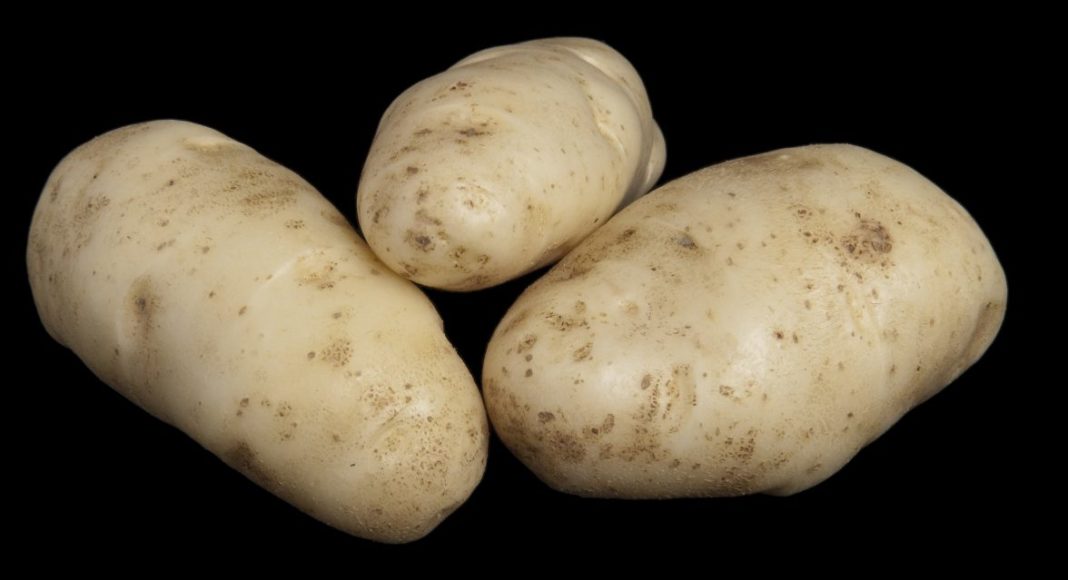Mutations are naturally occurring phenomena in all living organisms. Most mutations are harmful in the organisms in which they occur. In seed-propagated crops, such harmful mutations – “freaks” – are often lost in the cycle of sexual reproduction and selection.
Since the potato is commercially propagated by vegetative means, most mutations (also known as “sports”) that occur in the potato will be maintained. This can either be a bane or a blessing depending on the nature of the mutations.
Some major potato cultivars have arisen as result of spontaneous mutation. Mutations can affect many different traits, but many mutations are not easily recognized. Those affecting plant maturity, tuber skin texture or colour are easily recognized by the naked eye and have sometimes been used to develop selections with more desirable traits than the original cultivar. Mutations are often seen in commercial fields where large numbers of plants of one cultivar are grown. If one tuber or even a part of one tuber has a different skin colour or skin texture than all the others, it stands out from the rest.
Sometimes the change is only to a deeper colour hue in the tuber skin. Several of the red-skinned cultivars carry mutations that confer deeper red colour than the original parent cultivars. For example the red-skinned cultivars Norland, La Soda and Pontiac gave rise to Red Norland, Dark Red Norland, Red La Soda and Red Pontiac, respectively, while the slightly pigmented Warba gave rise to Red Warba.
Mutations can also go in the opposite direction from red and russet skin to white and smooth skin. For example, the red-skinned cultivar Desirée gave rise to the white-skinned Desital. Some russet-skinned cultivars, including Russet Nugget, have produced smooth-skinned mutants.
Sometimes mutations affect maturity. Plants that are later maturing than other plants of the same cultivar are easily identified in the field; they are known as “bolters” or “giant hills.” Some bolters have been selected and propagated to produce later maturing but higher yielding cultivars. For example, there are currently several commercial strains of Russet Norkotah that originated as bolters. The commercial success of these strains is apparent: in the U.S. 2015 Total Certified Seed Accepted Acres list, in addition to the “regular” Russet Norkotah, there are 13 different strains from this cultivar that together comprise nearly four times the certified seed acreage of the regular Russet Norkotah or eight per cent of the total U.S. seed potato acreage. (Canadian seed potato certification statistics do not differentiate between strains.)
The most famous mutant potato cultivar is Russet Burbank, a russeted variant that arose from the smooth-skinned Burbank’s Seedling that was selected by Luther Burbank in 1874. There has been some confusion about the historical origin of the russeted mutant. We do know that in 1902 the L. L. May Company in St. Paul, Minn. featured May’s Netted Gem Potato in its catalog. (The name Netted Gem has been used as a synonym for Russet Burbank in both the U.S. and Canada for several decades since that time.)
Burbank did not write much about his creation. Apparently he was not impressed with the russet mutation; in 1914 he is reported to have stated: “These Burbank potatoes raised by Lou Sweet of Denver, Colorado, have modified their coat in a way that does not add to their attractiveness.”
Burbank’s negative opinion notwithstanding, Russet Burbank quickly replaced Burbank’s Seedling. Today Russet Burbank is still the most widely grown cultivar in both Canada and the U.S.











